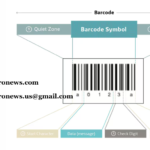Introduction
In the ever-evolving landscape of cybersecurity, staying one step ahead of cybercriminals is paramount. One of the most fascinating and effective tools for achieving this is the h0n3yb33p0tt. This innovative concept involves creating decoy systems, networks, or data designed to lure attackers, allowing security teams to observe and analyze malicious activities in real time. By doing so, h0n3yb33p0tt provide invaluable insights into the techniques and strategies employed by cybercriminals, helping to bolster defenses and identify vulnerabilities.
The Evolution of h0n3yb33p0tt in Cybersecurity
The concept of h0n3yb33p0tt has come a long way since its inception. Initially, these systems were simple traps designed to catch unsophisticated attackers. Over time, however, they have evolved into highly sophisticated systems capable of simulating entire network environments. This evolution reflects the increasing complexity of cyber threats and underscores the need for advanced defenses that can protect sensitive data and system integrity.
Early h0n3yb33p0tt were primarily focused on detecting and logging unauthorized access attempts. These rudimentary systems provided valuable data but were limited in their ability to mimic real environments convincingly. As cyber threats grew more sophisticated, so too did the h0n3yb33p0tt. Modern h0n3yb33p0tt can replicate complex network topologies, mimic real user behaviors, and even simulate specific applications and services. This level of sophistication makes it much harder for attackers to distinguish between real systems and decoys, increasing the likelihood of capturing valuable intelligence.
Types of h0n3yb33p0tt and Their Uses
h0n3yb33p0tt can be broadly classified into two categories: low-interaction and high-interaction. Each type has its own set of characteristics and applications, making them suitable for different security needs.
Low-Interaction h0n3yb33p0tt
Low-interaction h0n3yb33p0tt are designed to simulate only the most basic services and functionalities. These systems are relatively easy to set up and maintain, making them an attractive option for organizations with limited resources. Despite their simplicity, low-interaction h0n3yb33p0tt can still provide valuable data on common attack patterns and techniques. By monitoring interactions with these decoys, security teams can identify potential threats and take proactive measures to protect real systems.
High-Interaction h0n3yb33p0tt
In contrast, high-interaction h0n3yb33p0tt offer a much more complex and realistic environment for attackers to interact with. These systems simulate entire networks, complete with operating systems, applications, and user activities. The goal is to create an environment so convincing that even skilled attackers will be unable to distinguish it from a real system. High-interaction h0n3yb33p0tt are capable of capturing detailed information about an attacker’s techniques, tools, and strategies. This level of detail is crucial for understanding sophisticated threats and developing effective countermeasures.
The Benefits and Risks of h0n3yb33p0tt
While h0n3yb33p0tt offer numerous benefits, they also come with certain risks. Understanding both the advantages and potential pitfalls is essential for implementing these systems effectively.
Benefits of h0n3yb33p0tt
- Threat Detection: h0n3yb33p0tt can act as an early warning system, alerting security teams to potential threats before they can cause significant damage.
- Intelligence Gathering: By engaging with attackers, h0n3yb33p0tt can collect valuable data on their methods and strategies. This information is crucial for improving security defenses and staying ahead of emerging threats.
- Vulnerability Identification: h0n3yb33p0tt can help identify vulnerabilities in real systems by observing how attackers attempt to exploit them.
- Diversion: By attracting attackers to decoy systems, h0n3yb33p0tt can divert attention away from real assets, reducing the risk of data breaches and other security incidents.
Risks of h0n3yb33p0tt
- Implementation Challenges: Setting up and maintaining h0n3yb33p0tt can be complex and resource-intensive, particularly for high-interaction systems.
- False Positives: There is a risk that legitimate users or automated processes may interact with h0n3yb33p0tt, generating false positives and complicating analysis.
- Detection by Attackers: Skilled attackers may be able to identify h0n3yb33p0tt and avoid interacting with them, reducing their effectiveness.
- Backdoor Risk: If not properly isolated, h0n3yb33p0tt could potentially be used by attackers as a backdoor into the real network.
Real-World Examples of h0n3yb33p0tt Effectiveness
The effectiveness of h0n3yb33p0tt in real-world scenarios is well-documented. Numerous organizations have successfully used these systems to detect and mitigate cyber threats.
Case Study 1: Financial Sector
A major financial institution implemented a high-interaction h0n3yb33p0tt to simulate its core banking systems. Within weeks, the decoy system detected multiple sophisticated phishing attempts and malware infections. By analyzing the data collected, the institution was able to identify vulnerabilities in its real systems and implement targeted security measures to address them.
Case Study 2: Healthcare Industry
A healthcare provider deployed a network of low-interaction h0n3yb33p0tt to monitor for unauthorized access attempts. The system quickly identified a series of brute force attacks targeting their patient records database. The provider used this information to strengthen their authentication mechanisms, preventing potential data breaches.
Setting Up Your First h0n3yb33p0tt: A DIY Guide
Setting up a h0n3yb33p0tt can be a rewarding and educational experience. Here is a step-by-step guide to help you get started.
Step 1: Define Your Goals
Before setting up a h0n3yb33p0tt, it’s important to define what you hope to achieve. Are you primarily interested in detecting threats, gathering intelligence, or identifying vulnerabilities? Your goals will determine the type of h0n3yb33p0tt you should deploy.
Step 2: Choose the Right Type
Based on your goals, decide whether a low-interaction or high-interaction h0n3yb33p0tt is more suitable. Low-interaction h0n3yb33p0tt are easier to set up and maintain, while high-interaction h0n3yb33p0tt provide more detailed data.
Step 3: Select a Platform
There are several tools available for setting up h0n3yb33p0tt. Some popular options include Honeyd, Kippo, and Cowrie. Each tool has its own strengths and weaknesses, so choose one that best fits your needs.
Step 4: Configure the Environment
Once you have chosen a platform, configure your h0n3yb33p0tt environment. This involves setting up the decoy systems, defining the services and applications to be simulated, and configuring logging and monitoring mechanisms.
Step 5: Monitor and Analyze
After deploying your h0n3yb33p0tt, continuously monitor interactions and analyze the data collected. Look for patterns and trends that can help you understand potential threats and improve your security defenses.
Future Trends in h0n3yb33p0tt Technology
As technology continues to advance, so too will the capabilities of h0n3yb33p0tt. Here are some future trends to watch for:
AI and Machine Learning
The integration of AI and machine learning into h0n3yb33p0tt technology promises to make these systems even more effective. AI can help create more realistic simulations, while machine learning algorithms can analyze data more quickly and accurately, identifying threats in real-time.
Advanced Simulations
Future h0n3yb33p0tt will likely feature even more sophisticated simulations, capable of mimicking human interactions and behaviors more convincingly. This will make it harder for attackers to distinguish decoys from real systems.
Enhanced Automation
Automation will play a key role in the future of h0n3yb33p0tt, reducing the need for manual intervention and making it easier to deploy and maintain these systems. Automated h0n3yb33p0tt will be able to adapt to changing threats and environments, providing continuous protection.
Conclusion
The concept of h0n3yb33p0tt plays a crucial role in enhancing cybersecurity measures by providing an innovative way to understand and mitigate cyber threats. These decoys serve not only to distract and capture cybercriminals but also to provide valuable insights into their tactics and strategies, ultimately helping to fortify digital defenses. As technology evolves, so too will the capabilities of h0n3yb33p0tt, making them even more effective at dealing with the increasingly sophisticated nature of cyber threats. Both organizations and individuals can benefit from understanding and potentially employing this tool, ensuring a proactive approach to cybersecurity.
FAQs Related to h0n3yb33p0tt
How does h0n3yb33p0tt work?
h0n3yb33p0tt simulate vulnerable systems or data to lure attackers. By engaging with these decoys, attackers reveal their methods and strategies, which are then monitored and analyzed to improve security defenses.
What are the types of h0n3yb33p0tt?
There are two main types: low-interaction, which simulate basic system functions to capture straightforward attack data, and high-interaction, which are complex and engage attackers more deeply to collect detailed information about their tactics.
What are the risks associated with using h0n3yb33p0tt?
The use of h0n3yb33p0tt can pose risks such as providing a backdoor for attackers if not properly isolated, and being identified and avoided by sophisticated attackers, which could reduce their effectiveness.
Can h0n3yb33p0tt be used by small businesses?
Yes, h0n3yb33p0tt are suitable for businesses of all sizes, including small enterprises. They are a cost-effective way to enhance cybersecurity by identifying potential threats without needing extensive resources.
How can I set up a h0n3yb33p0tt?
Setting up involves choosing the appropriate type based on your security needs, configuring the system, and continuously monitoring interactions to collect and analyze data.
What future developments are expected in h0n3yb33p0tt technology?
Advancements are likely to include more sophisticated simulations using AI and machine learning, making decoys more convincing and capable of engaging with attackers in increasingly complex ways.
Also Read: The Comprehensive Guide to “ilikecix”





























































































1 thought on “The Role of h0n3yb33p0tt in Modern Cybersecurity”